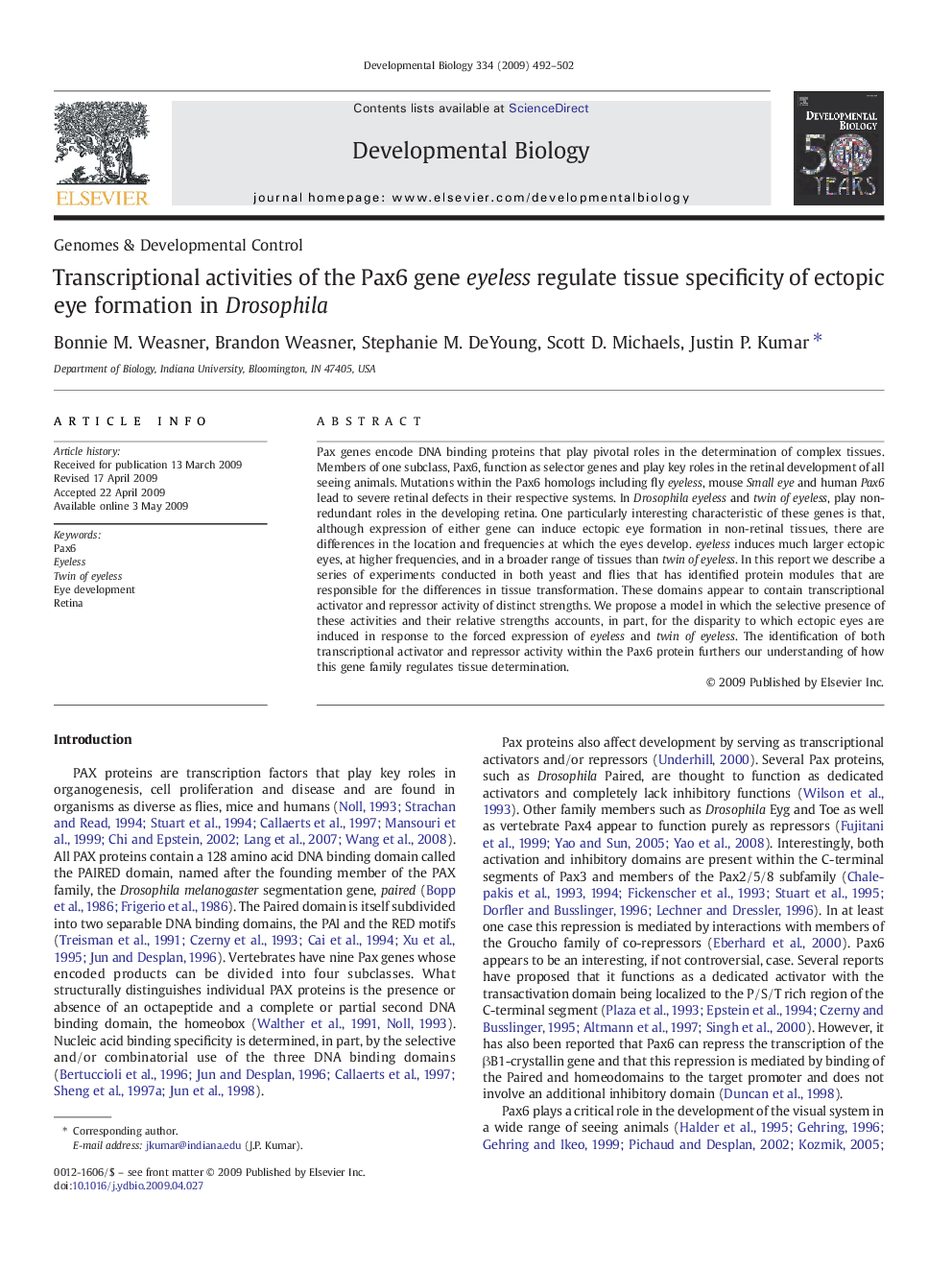| Article ID | Journal | Published Year | Pages | File Type |
|---|---|---|---|---|
| 10933273 | Developmental Biology | 2009 | 11 Pages |
Abstract
Pax genes encode DNA binding proteins that play pivotal roles in the determination of complex tissues. Members of one subclass, Pax6, function as selector genes and play key roles in the retinal development of all seeing animals. Mutations within the Pax6 homologs including fly eyeless, mouse Small eye and human Pax6 lead to severe retinal defects in their respective systems. In Drosophila eyeless and twin of eyeless, play non-redundant roles in the developing retina. One particularly interesting characteristic of these genes is that, although expression of either gene can induce ectopic eye formation in non-retinal tissues, there are differences in the location and frequencies at which the eyes develop. eyeless induces much larger ectopic eyes, at higher frequencies, and in a broader range of tissues than twin of eyeless. In this report we describe a series of experiments conducted in both yeast and flies that has identified protein modules that are responsible for the differences in tissue transformation. These domains appear to contain transcriptional activator and repressor activity of distinct strengths. We propose a model in which the selective presence of these activities and their relative strengths accounts, in part, for the disparity to which ectopic eyes are induced in response to the forced expression of eyeless and twin of eyeless. The identification of both transcriptional activator and repressor activity within the Pax6 protein furthers our understanding of how this gene family regulates tissue determination.
Related Topics
Life Sciences
Biochemistry, Genetics and Molecular Biology
Cell Biology
Authors
Bonnie M. Weasner, Brandon Weasner, Stephanie M. DeYoung, Scott D. Michaels, Justin P. Kumar,
